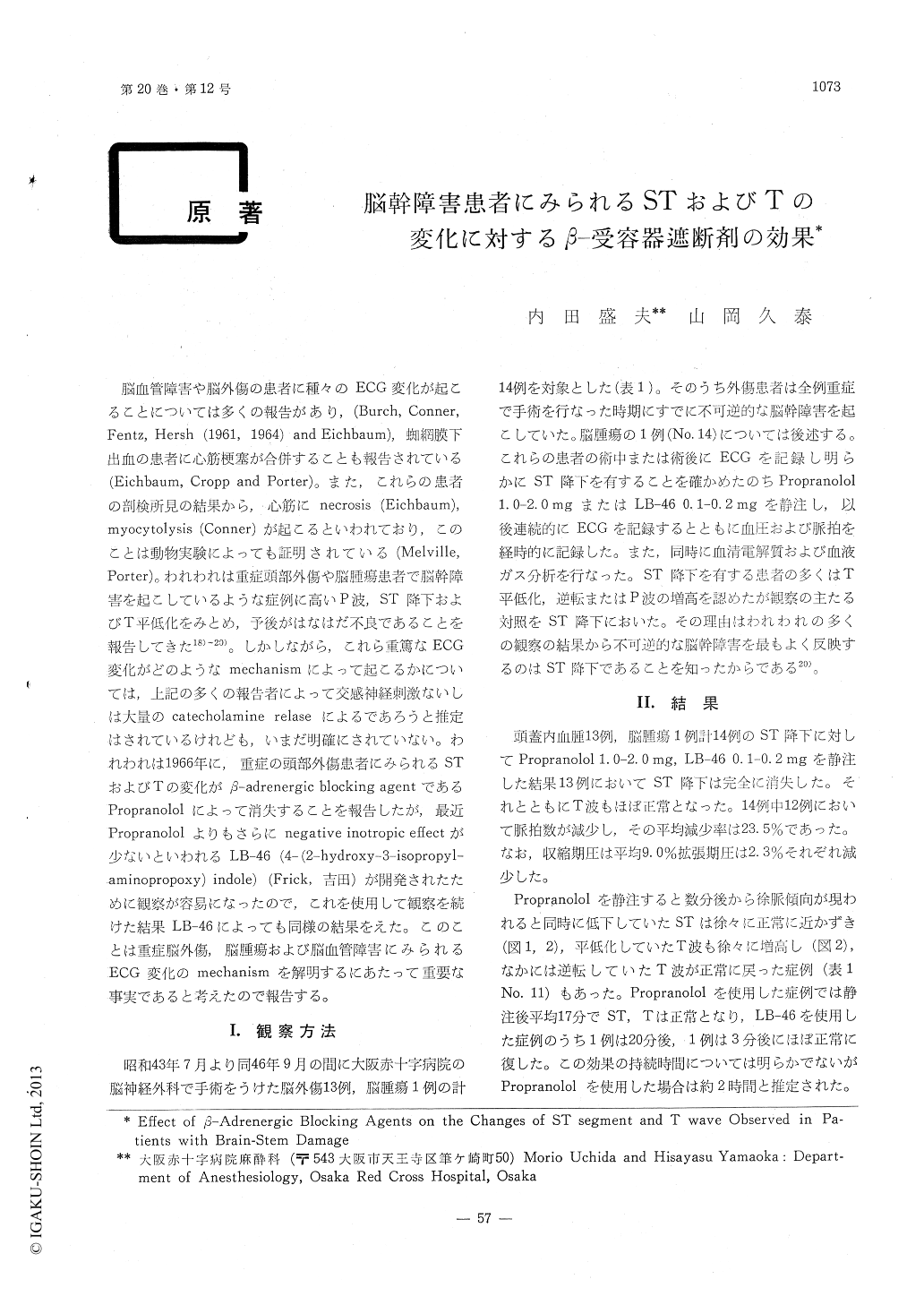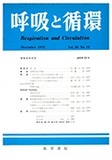Japanese
English
- 有料閲覧
- Abstract 文献概要
- 1ページ目 Look Inside
脳血管障害や脳外傷の患者に種々のECG変化が起こることについては多くの報告があり,(Burch,Conner,Fentz,Hersh(1961,1964)and Eichbaum),蜘綱膜下出血の患者に心筋梗塞が合併することも報告されている(Eichbaum,Cropp and Porter)。また,これらの患者の剖検所見の結果から,心筋にnecrosis(Eichbaum),myocytolysis(Conner)が起こるといわれており,このことは動物実験によっても証明されている(Melville,Porter)。われわれは重症頭部外傷や脳腫瘍患者で脳幹障害を起こしているような症例に高いP波,ST降下およびT平低化をみとめ,予後がはなはだ不良であることを報告してきた18)〜20)。しかしながら,これら重篤なECG変化がどのようなmechanismによって起こるかについては,上記の多くの報告者によって交感神経刺激ないしは大量のcatecholamine relaseによるであろうと推定はされているけれども,いまだ明確にされていない。
Many recent publications, including the authors' one have shown marked changes of ST segment and T wave on the ECG in patients with a severe intracranial lesion, but they do not seem to have clarified the causative mechanism of the changes. Presently an immediate and complete effect was demonstrated of β-adrenergic blocking agents on the changes of ST segment and T wave observed in patients with brainstem damage.

Copyright © 1972, Igaku-Shoin Ltd. All rights reserved.


